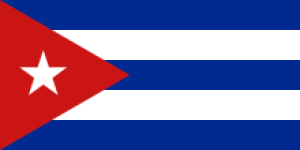The Left Needs A Positive Vision For How Immigration Policy Should Actually Work
No Comments yet 03-11-2024 ~ As Democrats move right on immigration, the left must boldly embrace open borders, says author John Washington.
03-11-2024 ~ As Democrats move right on immigration, the left must boldly embrace open borders, says author John Washington.
Militarized borders — comprising walls, barriers, fences and repressive border policies — have become something of the norm in today’s world, which otherwise is in favor of the free movement of goods and capital. But that wasn’t always the case. The United States, for example, had no federal immigration laws during the first century of its existence.
There are strong moral, political and economic arguments to be made against borders. In fact, the idea that the free movement of people across borders is detrimental to security and economic growth is largely based on biases and misconceptions, as John Washington points out in the exclusive interview for Truthout that follows.
Washington is a journalist and author of the brilliant and provocative book The Case for Open Borders, which was published last month by Haymarket Books.
C.J. Polychroniou: The issue of border security has become a hot political issue in the U.S. since former President Donald Trump entered the political scene. In fact, immigration today is driving support for Trump more than in 2016, forcing Democrats and President Joe Biden in turn to embrace tougher border measures, including proposals for shutting down the U.S.-Mexico border. Now, you have just published a book titled The Case for Open Borders in which you seek to draw attention to the advantages of open border policies while knowing fully well that such arguments are highly unlikely at this political moment to find much, if any, support in mainstream society. Indeed, you recognize yourself in the book that “open borders” is a concept reviled by people across the political spectrum. So, what motivated you to write a book on this topic at this point in time?
John Washington: The political class has tried, failed, tried again and failed again to do what they claim they want to be doing with border and immigration enforcement. That history of failure goes back decades, even centuries. We have evidence showing long-, medium- and short-term flops of border enforcement measures failing to stop migration. While such evidence ranges internationally, I’ll give a few U.S.-focused numbers here to underscore my point.
Currently, about 15 percent of the U.S. population is foreign-born, which is pretty much exactly what it was 100 years ago. The pattern follows globally. About 3.5 percent of global population are considered international migrants. That percentage has held steady for about 100 years despite dramatic increases in border enforcement. Those percentages now represent a vastly larger number of people.
Let’s drill down a bit more: The U.S. immigrant population born in Latin America and the Caribbean was roughly 3 million in 1970 but grew to over 22 million as of 2019. That period exactly tracks the rise of modern immigration and border enforcement. So not only have these percentages held steady, but, despite vast expenditures and the militarization of borders, in gross numbers, far more people are crossing them today.
One other example of how deterrence measures don’t work: In the months immediately following the most inhumane and well publicized of recent immigration enforcement measures, the family separation policy which was broadly implemented in 2018 (similar measures have existed before and after), more families came to the U.S.-Mexico border seeking protection. People move. They have, they do and they will move, and walls and crackdowns haven’t, don’t and won’t stop them.
So we can continue the extravagantly expensive and morally bankrupt charade of claiming border enforcement measures do what they purport to do — stop migration — or we can try a different and more humane approach.
I don’t think that support for Trump has forced Democrats to implement more severe and inhumane border policies. Democrats are responsible for their own failures and their own inhumanity on this issue.
What I aimed to do with this book was bring some clarity to a contentious and largely misunderstood idea, to take back a term and the concept, “open borders,” which is not a pipe dream or a dystopia but a means of extending freedom and justice.
You write in the book that the term “open borders” seems to be easily misunderstood even by people who are sympathetic to immigration. What exactly do you mean by “open borders,” and what’s the logic behind it?
Open borders could mean a lot of things, and I’m not aiming to have the perfect recipe or to try to prescribe concrete next steps. But I can offer what I think are some necessary ingredients: Opening borders must be coupled with ceasing the worst of extractive cutthroat capitalism as well as fighting for people’s “right to remain.”
To answer the first part of your question more concretely: I think open borders could look like what the European Union looks today, but without the militarized border of “fortress Europe” surrounding it. It could look like other passport-free zones throughout the world. It could look like the U.S., where people are free to cross state and jurisdictional borders, relocate to new communities with vastly different cultures, cuisines, climates and languages, where they are compelled to register, to civically engage and pay into the collective pot through taxes with the presumption that they are welcome.
Open borders are not to just knock down the wall, but also to reallocate the boondoggle expenditures toward resettlement and human and environmental reparations. It could make for more orderly human movement: people traveling through and registering at ports of entry rather than taking to the rivers, seas and deserts.
Do “open borders” also apply to the flow of goods and services?
In terms of rights of mobility, a toaster oven currently has more freedom of movement than most human beings. The World Trade Organization counts somewhere around 400 free trade agreements throughout the world today. Scholar and activist Justin Akers Chacón, in his book, The Border Crossed Us, counts that only 40 of them had any provisions for the free movement of people, and those are for highly specialized workers. I don’t think there’s any hope of putting the genie back in the bottle in terms of stopping or significantly slowing the global trade of goods, but I think when it comes to mobility, I’d argue that human beings should have the same rights, at least, as toasters.
For the first century of its existence, the U.S. had pretty much open borders. The movement of people across borders was quite unrestrained in other parts of the world prior to the emergence of the nation-state and before nationalism became a key component of identity. Indeed, borders were not conceived of as divisions between cultures, languages and political dominions, yet despite powerful global trends in our midst, we are still in an era defined by the primacy of the nation-state. So is history in this case a good guide for making an argument in defense of open borders? In other words, can the gates be opened while the nation-state remains intact? How do we get there?
There are some qualifiers to the claim the U.S. had open borders for the first 100 years, including the state and municipal poor laws that functioned as proto-immigration laws; limits on citizenship to free, white and wealthy men; the forced transfer of millions of enslaved people; and the sporadically enforced “borderlines” drawn between colonizers and displaced Indigenous groups.
But yes, there were zero federal immigration laws for the first century of this country’s existence. Until the 1990s, over 200 years after the country’s founding, there was basically no wall or fence infrastructure on the U.S.-Mexico border. For about 95 percent of our country’s history, Immigration and Customs Enforcement (ICE) did not exist. The current setup of militarized borders, criminalizing immigration and the archipelago of immigration detention centers, is very new. Which is also to say, very reversable.
I lean here on the scholarship of Jacqueline Stevens and Mahmood Mamdani, both of whom present excoriating cases against the nation-state. Abolishing the nation-state may sound scary or disruptive, but I don’t think it has to be. In fact, it would usher in more peace and justice. One obvious argument for why nation-states aren’t a good way to organize ourselves is that most of us don’t really live in nation states. The notion and centripetal pull of nationhood is, in almost all cases, a false construct. There are obvious examples like the United Kingdom, which is officially a multinational state: Britain, Scotland, Wales, Northern Ireland; or the Quebecois and the many distinct Indigenous groups in Canada, who feel much more tied to local or regional identity than any sense of Canadianness.
Benedict Anderson, in Imagined Communities, reveals the arbitrary and colonial logic behind dividing populations into nation states, and includes convincing evidence that the construct of nationhood cleaves closely knit cultures at the same time it tries to tie together distant and unrelated people in, for one of his focused examples, Indonesia.
The fundamental problem is that when you ascribe a territory and governance to only a certain people, you necessarily exclude other people. Why not be honest and both recognize and foster plurinational states, or, as Stevens suggests, states without nations?
Communitarians and others claim that cultures have an important moral status, which is why they are opposed to open borders. How do you counter this argument?
Contrary to what border restrictionists desire, a static or closed culture is a dead culture. Protecting a dead culture is a dangerous mission, one fought on a slippery slope: It is to essentialize, say, Americanness or Germanness and try to hoard it from the other, or to hark back to a more oppressive and segregated past. Keeping borders closed to protect the idea of any culture embodies the same essence of efforts to “make America great again.” Cultures are always in flux, and to blame migrants for changing culture is to miss the real culprits: natural shifts, international trade, and global connectivity and the Internet.
Trump’s immigration plan is even more aggressive now than it was in 2016 or even during his four years in the White House. Could the issue of immigration hand the 2024 election to Trump?
It certainly could. But to try to out-Trump Trump in terms of immigration in order to undercut a talking point is an idiotic policy. It also plays politics with people’s lives. How we talk about and implement immigration policy has real and sometimes deadly effects on human beings. I don’t see anyone in these high-level strategy and legislative debates taking seriously the humanity of migrants. That should be the polestar, not nonsense terms like “border security” or trying to reduce weekly or daily “encounters.”
One of the central aims of my book was to articulate a positive vision for the left in terms of immigration policy. The left has been critical and defensive, or downright conciliatory to the right for decades but hasn’t generated a coherent and positive vision for how immigration should actually work. I get the frustrating realities of governance, but I also think we should work with clear ideals rather than muddied half-steps.
Over the years, there have been various people and movements challenging reactionary nationalism by making the case for open borders. I think it’s important that we acknowledge them, so can you discuss some of them?
People involved in the sanctuary movement in the 1980s and ‘90s ferried migrants over the U.S.-Mexico border and offered refuge and support once they were here. They also fought political and legal battles against not only deportations and border enforcement, but against the murderous economic and military interventions the U.S. was waging (and, under different guises, continues to wage) in Central America. The legacy of the sanctuary movement continues today with direct organizational descendants and offshoots as aid workers stand in solidarity and fight for the life and dignity of migrants.
The sanctuary movement didn’t come out of nowhere. It was inspired and deeply influenced by the spirit and tactics of the civil rights movement, which in turn was inspired by labor and suffragist organizing, as well as the fight to abolish slavery. I think it’s important to acknowledge and honor that throughline.
Of course, migrants themselves, when they cross borders, are committing a subversive and political act. They undermine the logic of borders and show the folly and fallibility of militarized border regimes.
I’ll also recommend two books by contemporary thinkers who, along with many other colleagues and compas, are doing terrific work. Harsha Walia’s Border and Rule and Todd Miller’s Empire of Borders.
I hate to end on a down beat, but I do think it’s germane to point out that the #AbolishICE hashtag has sort of fallen out of political fashion since Trump left the White House. (There remain some strong circles, however, where the fight to abolish ICE and border imperialism has definitely not fallen out of fashion.) ICE isn’t abolished, of course, which underscores that deep and lasting commitment and deep and incisive analysis is essential if we want true justice.
Note: This transcript has been lightly edited for length and clarity
Source: https://truthout.org/
C.J. Polychroniou is a political scientist/political economist, author, and journalist who has taught and worked in numerous universities and research centers in Europe and the United States. Currently, his main research interests are in U.S. politics and the political economy of the United States, European economic integration, globalization, climate change and environmental economics, and the deconstruction of neoliberalism’s politico-economic project. He is a regular contributor to Truthout as well as a member of Truthout’s Public Intellectual Project. He has published scores of books and over 1,000 articles which have appeared in a variety of journals, magazines, newspapers and popular news websites. Many of his publications have been translated into a multitude of different languages, including Arabic, Chinese, Croatian, Dutch, French, German, Greek, Italian, Japanese, Portuguese, Russian, Spanish and Turkish. His latest books are Optimism Over Despair: Noam Chomsky On Capitalism, Empire, and Social Change (2017); Climate Crisis and the Global Green New Deal: The Political Economy of Saving the Planet (with Noam Chomsky and Robert Pollin as primary authors, 2020); The Precipice: Neoliberalism, the Pandemic, and the Urgent Need for Radical Change (an anthology of interviews with Noam Chomsky, 2021); and Economics and the Left: Interviews with Progressive Economists (2021).
You May Also Like
Comments
Leave a Reply







